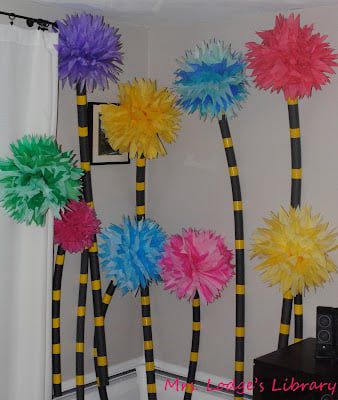While we are all aware that neon signs give off that vintage and retro feeling we all love, many times, you might have to struggle with keeping them functional as they can break down or stop working suddenly.
Well, there is some good news, we understand your pain all too well, and we're here with a balm.
Contrary to what you may think, repairing your neon sign is not rocket science; with the right tools, even you can get it done. In this guide, we'll show you how to fix a neon sign and release bonus tips on how to maintain it.
Tools you'll need
Below are a few tools you may need to get the job done:
- Tracing paper
- Multimeter
- Hand torch
- Pliers
- Protective gear
- Neon glass tube
Table of Contents
Why do Neon Signs Breakdown?
While there are several reasons for this, we'll be throwing light on the two main reasons. They include;
Power Troubles
It all comes down to the basics. Most of the glass neon signs rely on high voltages to function. The high voltage has to be steady, seamless, and unbroken as any break in connection or fluctuations will cause blinking, and with time cause the light to go out.
So, whenever you notice glittering, flashing irregularly, or shutting off completely, it is usually an indication of a problem with the power supply.
To prevent these fluctuating voltage signals from causing damage to your neon sign, you need to ensure that the connected glass neon lights receive the same amount of voltage throughout the circuit.
Additionally, the connection must be perfect because neon light tubes are installed in series, so if one tube malfunctions, the rest of the neon sign is affected.
Mechanical Problems
Another major reason for the breakdown experienced by neon signs is structural problems. These problems, also known as mechanical problems, can arise from inside or outside the tubes. So, if there's a crack in the glass, you shouldn't be surprised when the sign stops working.
Moreover, if there is a gas leak or the gas in the tube becomes low, the neon light can stop working and eventually break down.
Additionally, the problem might be from the electrodes at both ends of the tube. So, the bottom line is that there are several potential structural problems, so keep an eye out for them if at any time your neon sign breaks down.
Step-by-Step Procedures on How to Fix Neon Sign?
Your neon sign is starting to lose its game, the "lady in red" is now flickering and blinking, that's not a good sign, it now or never or else you risk it becoming irreparable, well, here are step-by-step procedures written just for you as a guide through the repair:
Step One - Troubleshoot the Power Circuit
Even though there is greater chance that the problem will be from the tubes, the power circuit is not free of suspicion just yet. Ensure you check the power circuit to ensure that the problem isn't a broken transformer or component that is reducing the voltage.
Also, use a multimeter to check the voltage at every possible electrical connection. Check for any shorted, burnt, or broken wires. Broken wires could cause neon glass tubes to stop working. Be sure to fix all broken wires and complete the circuit.
Step Two - Change the Glass Tube
Unfortunately, mechanical and structural problems with neon glass tubes are more difficult to resolve than the power circuit problems. The reason for this is due to the fragile nature of the tube and the presence of mercury.
A small crack in the tube makes it utterly useless unless fixed and, in many cases, you’ll need to first locate the crack before sealing it off the crack by glassblowing. However, when the tube contains mercury, it can become dangerous to handle because they create harmful fumes.
In such situations, completely replacing the tubes will be the better alternative.
Step-by-Step on How to Fix a Neon Sign if the Glass Tube is Faulty
Here are a few steps to fix your neon sign.
Step one – Trace out the old pattern
Take a pattern paper and trace out the existing neon tube (you are doing it to make sure you remember what the design looks like). Imagine you cannot fix the sign on your first try to try a second time again.
It is a lot safer than breaking the sign up and forgetting the pattern. Even if you have a photographic memory, it is best to trace out a picture of the neon sign as best as possible. Once the pattern is traced out, you are ready for your next step.
Step two – Scrape off the insulators
Hey Da Vinci! Now that you have successfully traced the pattern, it’s time to get to work. Next, scarp off the old insulators and block the paint. It might sound weird, I know, but both of these steps are very important in preventing fuming while we are working on this project. Also, it will make it easier to identify what type of tube you are working with – neon or mercury.
Step three – Prep the tube
Clean up the tube to prevent dust from settling in the tube during your repair process. With that done, check the vacuum of the tube. It is quite easy; all you need is a spark coil or tube tester, depending on whichever is available to you at the time.
Insert it into the tube, and if the tube lights up, we know the tube is under vacuum, and cutting will allow air inside. Then, the dilemma becomes how do you let air into the tube without blowing the powder coating and completely wasting the neon tube?
Heat the sealed tip of the tube with a hand torch or any open flame. It causes the seal to crack easily. Leave to cool for a bit, and then break it in two. When carrying out this operation, remember to wear protective gear, as we don't want you to get hurt.
Step four – Glassblowing
Using a different tube size will mean more work that you can easily avoid. So, head over to your home improvement store and get a tube with the same diameter as the old one.
It is then time for glassblowing. To begin, clean the tube and remove any loose bits of phosphor coating and dust. Heat the tube and pull the glass with pliers when it is soft and molten; twist and work it until it fits the pattern you traced out earlier. Let it cool, and you are done!
Although your old electrodes might be working fine, we suggest changing them when inserting these new tubes.
Tips for Fixing Minor parts
- Replace smaller parts
After the major fixes, you might need to replace smaller parts. Objects and parts like nuts and bolts can be changed, replaced, or cleaned if needed. However, be careful when you work on this part.
A typical Neon sign transformer can pump out over 4,000 to 13,000 volts of electricity to maintain a steady output. Moreso, it will be suicide to fix any component or change any art while the sign is still on.
- Don’t shake the glass
DO NOT SHAKE THE GLASS to check if it’s cracked or broken. Doing this will only lead to you creating a new crack or worsening an old one.
- Meet the pros
We do not advise you to repair older neon signs on your own. Instead, please take it to a pro or invite one over. With older neon signs, some transformers could hit 15,000 volts or more, leading to tales of doom and mishap if handled improperly.
Another reason you should seek out the pros because, with older models, the glass tubes were leaded. Although replacing this leaded glass with non-leaded glass will not affect its performance, it will reduce its market value.
- Double-check everything
When you open up the neon sign and have finished fixing it up, make sure you check everything else, including wiring, nuts, bolts, insulators, electrode housing – everything. Ensure they are working correctly and rust-free; it would be a waste to reopen the sign again.
Conclusion
Fixing a neon sign should be a breeze for you with the aid of this guide. The steps enumerated above will help you to fix and maintain any neon sign.
Here are some tips to keep in mind
- Call for professional help if you need any assistance with repairs
- Always wear protective gear
- Do not handle mercury tubes without an expert
- Buy only quality materials and parts
- Check out the tutorial video in this guide if you need any help.
Comment below if you have any questions, and we'll be sure to reply to you.









Ask Me Anything